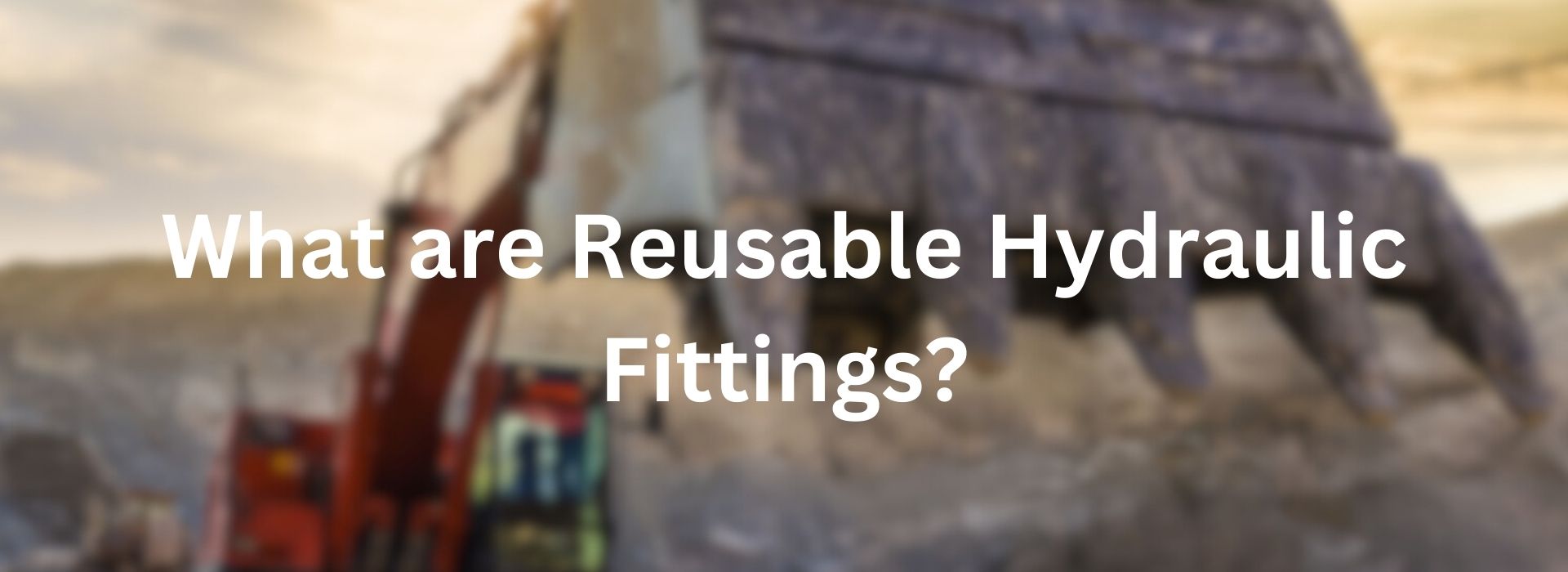
Reusable hydraulic fittings are the cornerstone of the hydraulic engineering field. These fittings are designed for quick installation and removal without the need for specialized tools and are highly versatile. Importantly, they can be used multiple times and are indispensable tools for a variety of hydraulic applications. Specifically, they are suitable for both building new hydraulic systems and for quick repair applications in the field.
Standard reusable fittings generally consist of two components: the hose ferrule and the coupling. Specifically, the ferrule plays a key securing role. Designed as a conical or cylindrical shape with internal threads, the geometry of the ferrule allows for a very tight connection to the hydraulic hose. Fittings have a hose end and a threaded end. The hose end allows for a tight fit to the inside diameter of the hose for a gas-tight seal. The threaded end allows for the connection of various hydraulic components. Fittings are usually made of sturdy materials such as carbon steel or stainless steel to ensure long-lasting performance. In short, hose ferrules and couplings can be designed to harmoniously combine the two components in a way that meets stringent industry requirements while saving cost and time.
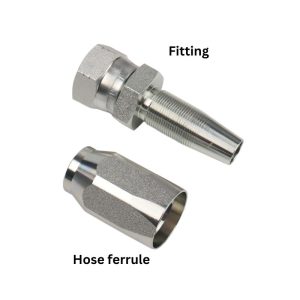
They are categorized differently depending on the design, application, and regional standards. Let’s delve into these categories to understand their unique benefits and appropriate use cases.
Joint Industry Council (JIC) removable fittings stand out for their high-pressure retention capabilities. Primarily used in fluid power applications, these fittings feature a 37-degree flared seating surface that ensures a reliable, durable connection. Their high-pressure retention makes them the couplings of choice for industries that require fluid power control, such as manufacturing and construction.
National Pipe Thread (NPT) removable fittings are widely used in the petrochemical and natural gas industries. The tapered threads of these fittings create a safety seal, which is useful in applications where volatile or hazardous substances need to be transported. The robust sealing action of NPT fittings virtually eliminates the risk of leakage, even under extreme conditions.
The O-Ring Face Seal (ORFS) removable fitting is the pinnacle of leak-free connections. They are fitted with an O-ring on the end face and offer unrivaled sealing capability. For this reason, they are often chosen for high-pressure hydraulic systems where leaks can lead to catastrophic failure. Their effectiveness is particularly evident in areas such as aerospace and automotive hydraulics.
British Standard Pipe (BSP) reusable fittings are ubiquitous in the UK and Europe. They are available in a range of threaded forms and work well with a wide range of applications. Versatile and reliable, these couplings are the preferred choice for fluid transfer systems in Europe.
The Society of Automotive Engineers (SAE) inverted flare fitting is the gold standard for automotive braking systems. Its design features a flare at the end of the pipe that perfectly meets the stringent requirements of automotive safety. This flare ensures a tight, secure fit, which improves the efficiency and safety of the braking system.
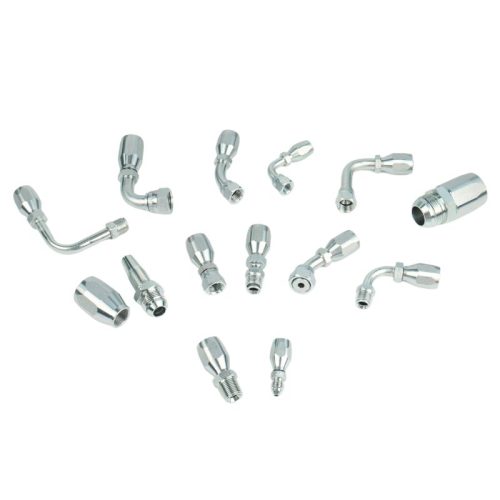
Different hydraulic fitting manufacturers have different thread standards and models, with the most common benchmarks in the industry being Parker field removable couplings and Eaton standard reusable couplings. But Topa can provide these types of fittings that are compatible with Parker and Eaton.
ISO: International Organization for Standardization
The International Organization for Standardization has a reputation for developing comprehensive, globally recognized standards in a variety of fields. In the case of reusable hydraulic fittings, ISO guidelines are rigorous, focusing on areas such as dimensional accuracy, pressure ratings, and material properties.
SAE: Society of Automotive Engineers
Centered on the automotive industry, including its complex hydraulic systems, SAE standards are uniquely specialized but equally critical.SAE standards for reusable fittings are rigorously developed to address the unique challenges and requirements of automotive applications. This requires the specification of pressure handling capabilities, leak prevention, and even corrosion resistance.
Material selection is a key factor in the performance and service life of reusable hydraulic fittings. Material selection can have a significant impact on attributes such as corrosion resistance, pressure capacity, and overall system reliability.
Stainless steel is the material of choice for applications requiring high corrosion resistance. Due to its unique alloy composition, stainless steel has unrivaled corrosion resistance, making it ideal for use in harsh environments such as marine applications or chemical processing plants. In addition, its robust structural integrity allows for high-pressure capacity. So if your hydraulic system operates under harsh conditions, stainless steel reusable fittings offer the best solution.
Brass is a great choice for those looking for a balance between cost-effectiveness and performance. While brass is not as robust as stainless steel when it comes to pressure resistance, it is quite resistant to corrosion. Brass is highly resistant to rust, which is why it is widely used in applications such as water-based hydraulic systems. Brass fittings are also easier to work with, resulting in greater cost savings for mass production.
Carbon steel fittings offer excellent strength and are often used in high-pressure hydraulic systems. However, it is important to note that carbon steel is susceptible to corrosion, especially when exposed to moisture and oxidizing agents. Despite its susceptibility to corrosion, carbon steel is still a popular choice due to its excellent strength-to-cost ratio, especially when corrosion can be controlled by additional protective measures such as galvanizing or painting.
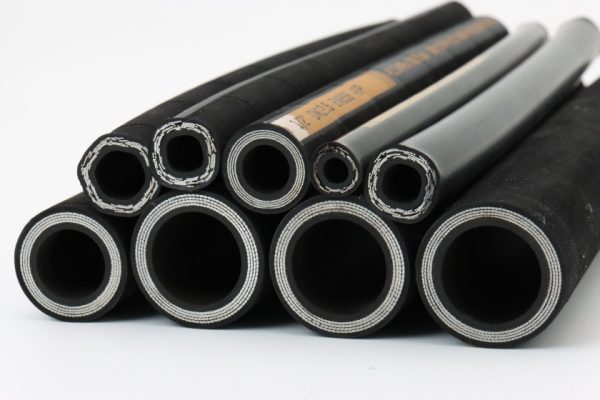
Combining the right hose with reusable hydraulic fittings is critical to system performance and safety. Hoses are categorized according to their design, material, and application suitability. Here, we present a selection of SAE-compliant hoses that work well with reusable fittings.
Suitable for medium-pressure applications, the SAE 100R1AT hose is made of high-strength steel wire braid for excellent flexibility and durability. It works seamlessly with reusable fittings to form a safe, leak-proof system.
SAE 100R2AT features a double braid design to withstand higher pressure ranges. This hose is typically used with reusable fittings in applications such as industrial hydraulics where excellent pressure resistance is a must.
Designed for air brake systems, the SAE 100R5 hose offers medium-pressure capability and rugged construction. Its design ensures an effective connection to reusable fittings to provide reliable brake fluid delivery.
This type of hose is designed for installations requiring tight wiring configurations. Known for its flexibility, SAE100R6 is an excellent choice for compact hydraulic systems using reusable fittings.
SAE100R7 hose is made of thermoplastic material and is ideal for medium-pressure applications. Its material compatibility makes it ideal for connection to reusable fittings in less abrasive environments.
For systems operating in extreme conditions, the SAE100R14 hose offers PTFE lining and stainless steel wire reinforcement. Highly compatible with reusable fittings, this hose is highly resistant to temperature and corrosion.
Special hoses designed for automotive air brake systems are also compatible with reusable fittings. These hoses are manufactured to meet stringent safety requirements to ensure a foolproof braking mechanism.

In agriculture, durable and cost-effective solutions are indispensable. Reusable couplings for farm machinery such as tractors and harvesters provide fail-safe, high-pressure connections that are both reliable and easy to service in the field.
The construction industry relies on heavy machinery such as bulldozers, excavators and cranes. Reusable couplings with high tensile strength can withstand the rigors of the construction site, ensuring equipment longevity and operational safety.
Manufacturing units place a high value on efficiency and uptime. Reusable hydraulic fittings fit seamlessly into the production line for quick assembly and disassembly during maintenance cycles. This helps to reduce downtime and increase productivity.
In automotive applications, safety is of paramount importance. Reusable fittings are often used in braking systems, where they must meet strict specifications for pressure retention and leakage prevention. Their ease of installation and removal also simplifies maintenance of the braking system.
The installation of reusable hydraulic fittings is straightforward but requires meticulous attention for optimum performance and safety.
Tools Required
Wrench
Lubricant
Determine Hose and Fitting Type: Before proceeding with installation, make sure the hose and fittings are the correct type. Mismatches can cause leaks and compromise system integrity.
Lubricate: Apply an appropriate amount of lubricant to the threads of the hose and couplings. This will simplify the installation process and help extend the life of your hydraulic system.
Tighten: Use a wrench to secure fittings in place. Be sure to achieve the manufacturer’s specified torque level for an airtight seal.
Safety Procedures
Always wear protective equipment: Gloves and goggles must be worn during installation. Accidental hydraulic fluid leakage can cause serious skin and eye injury.
An effective maintenance and troubleshooting strategy is critical to maximizing the life cycle of your reusable hydraulic fittings. The following is a comprehensive guide to ensure that your fittings are always in optimum condition.
Visual Inspection: Periodically inspect fittings for visible damage, including cracks, rust or deformation.
Pressure Test: Perform a pressure test to verify that the fitting can withstand the specified pressure range.
Leak Check: Look carefully for signs of fluid leakage, which may indicate a damaged seal.
Thread Wear: Look for signs of thread stripping on fittings, as this can lead to leaks.
Corrosion: A telltale sign of wear is the beginning of rust or corrosion, especially in carbon steel fittings.
Deformation: Any noticeable change in the shape or size of the fitting may indicate mechanical wear.
Leakage: If leakage occurs, first try tightening the fitting; if the problem persists, the fitting may need to be replaced.
Pressure Drop: Unexplained pressure drops may require rechecking the type of fitting being used and making possible adjustments.
Frequent tightening required: If you find yourself having to tighten a fitting frequently, this is a clear sign that it needs to be replaced.
Persistent Leakage: Persistent leakage, even after tightening and resealing, is an indication that the fitting has reached the end of its useful life.
Visible Damage: Any form of visible damage, such as cracks or deformation, is a sign that it needs to be replaced immediately to avoid system failure.
When choosing a manufacturer for reusable hydraulic couplings, it is often necessary to strike a balance between quality and economy. As the market leader in hydraulic components, Topa offers convincing solutions for both criteria.
Topa Hydraulic’s state-of-the-art production facilities in China ensure that every reusable coupling meets the highest quality standards. At the same time, our strategic location allows us to pass on the cost advantages to you, providing you with an excellent price/performance ratio that is hard to beat.
Our quality assurance process includes rigorous testing and inspection to verify that each product meets global standards such as ISO or SAE. In addition, our team of technical professionals oversees every stage of production to ensure that every reusable fitting is designed for durability, performance, and ease of use.
When quality and economy are your top priorities, the choice is clear: Topa is your preferred supplier for high-quality, competitively-priced reusable fittings. Contact us today and take advantage of our unrivaled expertise and comprehensive solutions for all your hydraulic component needs.
By making an informed decision and choosing Topa, you’re not just buying a product; you’re investing in reliability, innovation, and performance that only an experienced manufacturer can provide.
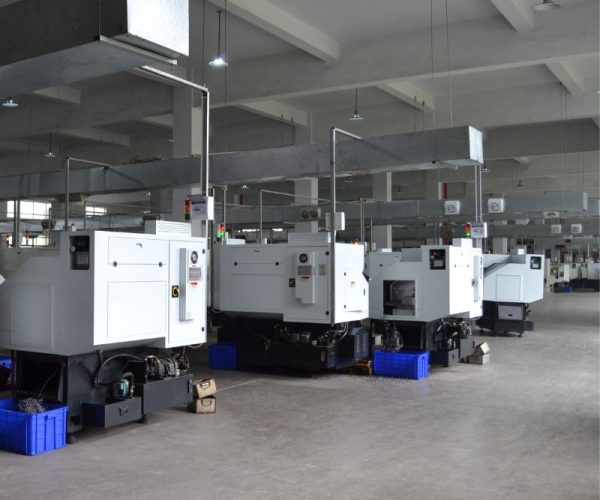
The life expectancy of reusable hydraulic couplings can vary greatly depending on factors such as material quality, operating conditions, and maintenance frequency. However, if properly maintained and used within design specifications, these couplings can last for several years.
Generally, reusable hydraulic couplings are compatible with a wide range of hoses, but it is critical to refer to the manufacturer’s guidelines to ensure a proper fit.
The “better” choice between reusable fittings and crimp fittings depends on your specific needs. The advantage of reusable fittings is that they are quick to assemble in the field and require no special tools. Whereas crimp fittings are often considered a more rugged and permanent solution. You should consider factors such as application, frequency of replacement and budgetary constraints when making your selection.
Compression fittings are typically single-use, as the ferrule forms a permanent connection once it is compressed. While some special types are designed to be reusable, it is recommended that the ferrules be replaced with each new installation to ensure a secure fit.
Most reusable hydraulic fittings do not require a sealant because they are designed to mechanically form a tight, leak-proof connection. However, sealants may be required in certain applications or under extreme conditions. Always refer to the manufacturer’s instructions for specific recommendations.